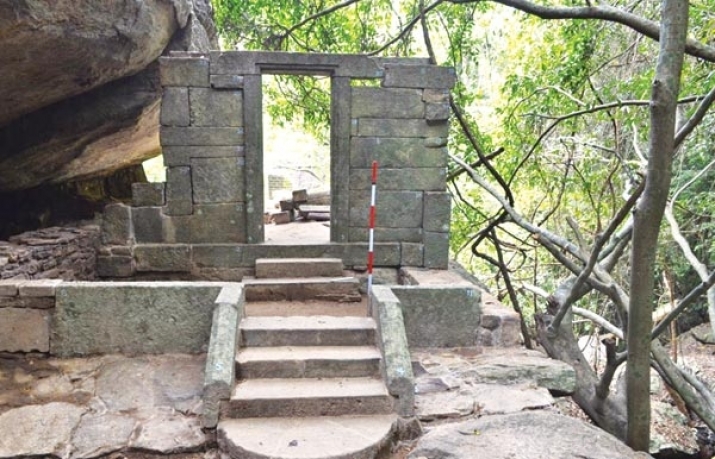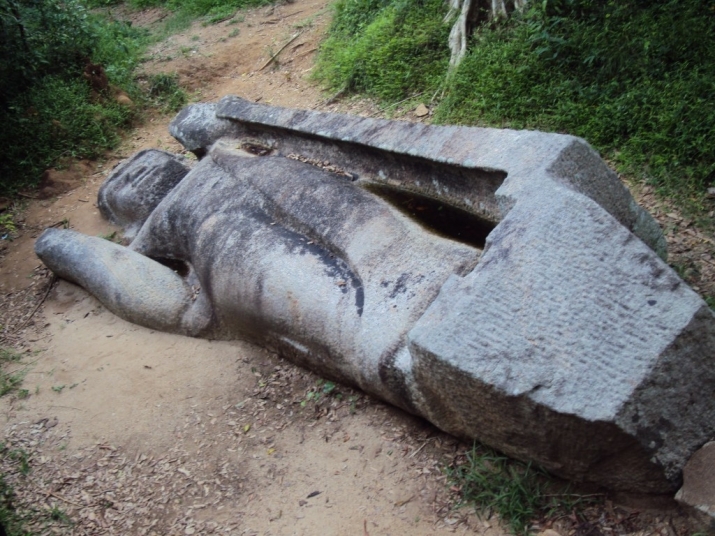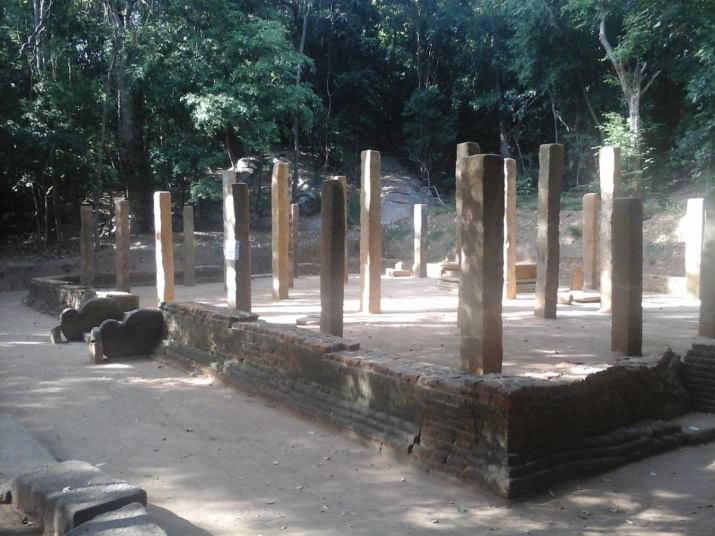NEWS
Sri Lanka Archaeologists Race Against Time to Preserve Ancient Buddhist Monastery
 From dailynews.lk
From dailynews.lkArchaeologists in Sri Lanka are steadily working against the clock to prevent the ancient Rajagala Buddhist monastery from being lost to history. Teams from Sri Lanka’s University of Sri Jayawardenapura have been methodically bringing to light the secrets of the ancient site, which so far include stupas, a refectory, an uposathagra (a building for religious observances), a hot water bathhouse, as well as more than 50 cave dwellings that are believed to have once been the residences of some 500 monks.
Rajagalathenna, or Rajagala Monastery, is situated on Rassagala, commonly known as Rajagala (The Monarch’s Rock), a rugged and heavily forested mountain that is also an area of major archaeological significance in Sri Lanka as it is home to some 600 prehistoric ruins, monuments, and artifacts. According to historical accounts, the kings and princes of the ancient kingdoms of Sri Lanka visited the once great monastery, known in ancient times as Girikumbhila Temple, which is believed to date back to at least the 3rd century BCE.
The ambitious undertaking to preserve the historic site has been spearheaded by the university’s vice chancellor, Prof. Sarath Amaratunga. “The Department of Archaeology knew of the Rajagala site for some time but they did not have the money to excavate,” he noted. “The university thus decided to undertake this project and we applied for a US embassy fund for the money. We also approached the [Sri Lankan] government with the idea and they too provided us with a certain amount of funds.” (Daily News)
In 2015, the university received US$150,000 from the US embassy in Sri Lanka to support a comprehensive ground survey of the ancient Buddhist structure and to help with conservation of some of the most important monuments at the site, which were used by early Buddhist monks. Last year’s grant was the second time the US has provided funding for the project, following a US$100,000 grant in 2013.
 From sjp.ac.lk
From sjp.ac.lkThe initiative has provided archaeology students from the university with an opportunity to gain practical experience at an active dig, and has also enabled students from international universities to visit and participate in the project.
Prof. Amaratunga added: “The other issue we have is that we don’t have a proper laboratory to test the samples [unearthed at the site] and date them in Sri Lanka. We have to send them abroad. So we have asked for more funds from the US embassy to set up a laboratory within the university.” (Daily News)
The planned laboratory will form part of a larger project by the university to establish a Rs4 billion (US$27 million) Faculty of Technology—the first of its kind in Sri Lanka—to train archaeologists in the specialist engineering skills needed to undertake excavations. “At present we have a vacuum for such specialists in the country,” Prof. Amaratunga observed. “Most archaeologists are only trained in social sciences and do not have the expertise to study structures. This will open up many job opportunities.” (Daily News)
Rajagala Monastery has not been inhabited since the fall of the Anuradhapura Kingdom (377 BCE–1017). Over the intervening centuries, many of the original structures have been destroyed or fallen into serious disrepair due to encroachments by both nature and humans—in particular treasure hunters, who have dug holes in many of the monuments, including stupas and caves.
 From wikipedia.org
From wikipedia.orgThe main objective of the university’s project is to preserve the architectural remains and the cultural landscape of Rajagala by preventing further deterioration of the site and by carrying out intervention to revive and revitalize the forest monastery as a spiritual center for the benefit of future generations. Some 80 different structures have so far been identified at the site, all of which need to be separately assessed, prior to preventive conservation action to mitigate further damage, especially from encroaching vegetation. Accumulated earth on the structures will then be removed to allow the full examination and documentation of each monument.
See more
Salvaging Rajagala from being lost forever (Daily News)
Related
US Embassy in Sri Lanka Grants US$300,000 to Preserve Buddhist Relics (Buddhistdoor Global)














